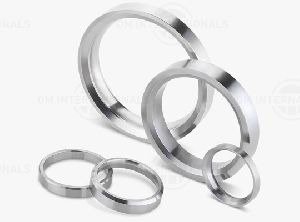
Valve Seats Inserts
The valve seat insert prevents the impact/burying of the valve into the cylinder head. It absorbs a proportion of the combustion heat with which the valve is charged. The valve seat insert gives off this heat to the cylinder head. To meet the different strains, an optimum material composition of the valve seat inserts must be found. Not only must the operating conditions in the engine be considered, but also the machinability of the material for the engine reconditioned. Valve Seats are made from High Quality Chromium and Nickel. Valve Seats ground surface is maintained 15 to 20 microns and face parallelism @ 10 microns. 100% dimensions Inspection and Visual Inspection of Valve seat Inserts. Hardness of Valve Seats must be 30 to 35 HRC. Materials In the most recent engine generations of renowned car manufacturers, valve seat inserts made of sintered material (powder metallurgical procedure) are used. The increasingly high, thermal strain of the seat insert in the combustion chamber can hardly be met anymore by materials from conventional casting processes. For this reason, Motorservice offers sintered valve seat inserts amongst others from two different material combinations, which covers the entire application range of future engines. Sintered Metal Seat Inserts Cast Iron Seat Inserts Production Capacity 30000 pieces per month *Believe in Quality not Quantity
...more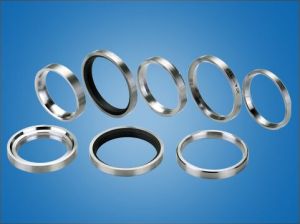
Valve Seats
Valve Seats are made from high Quality chromium and Nickel. Valve Seats ground surface is maintained 15 to 20 Microns and face parallelism @ 10 microns. 100% dimensions inspection and Visual Inspection of Valve seat inserts. Hardness of Valve Seats must be 30 to 35 HRC.
...more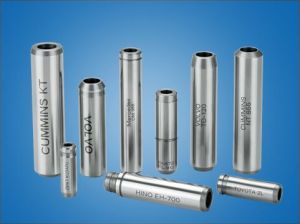
Valve Guides
The valve guide has the task to absorb the transverse forces which affect the valve stem. The valve guide centers the valve on the valve seat insert and conducts a proportion of the heat from the valve head, via the valve stem to the cylinder head. Due to this extreme strain, for the valve guides mainly the material and its properties are a decisive factor for the product quality. Production Capacity 30000 pieces per month *Believe in Quality not Quantity Materials Valve guides are made of materials with good gliding and thermal conductivity properties. Grey cast iron and brass materials with selected alloy components have been particularly proven.
...more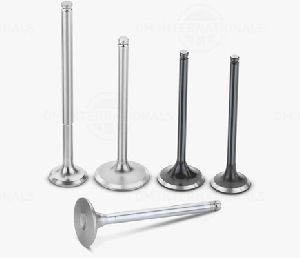
Engine Valves
Inlet valves and outlet valves seal off the combustion chamber and control the charge exchange process in the engines. Valves are mechanically, highly strained components which are additionally subject to corrosive influences The outlet valve is additionally heated by the passing hot exhaust gases during outlet clock opening. The valves are cooled down mainly by conducting heat via the valve seat insert to the cylinder head. The smaller proportion of the heat is conducted via the valve guide to the cylinder head. Inlet valves reach temperatures of approx. 300 °C to 550 °C, outlet valves can get up to 1,000 °C The Engine Valves are made up of heat resistant alloy. Various processes like Chrome flash on Stem Satellite on seat and tip area, Nitriding / Tuft riding are offered. The machining of outer diameter and radius of engine valves are processed on CNC Machine. Dimensions & Technical Terms 1 Total Length 2 Total Valve head thickness 3 Seat Height 4 Height of valve seat face 5 Seat Mourning 6 Valve Head 7 Skirt diameter 8 Valve stem 9 Groove diameter 10 End face of stem (hardened) 11 Grinding length 12 Throat 13 Valve seat angle 14 Head surface 15 Head diameter 16 Culotte Engine Valves Specifications Size Range Valve Stem Diameter: 4 to 16 mm Valve Head Diameter: 20 to 70 mm Valve Length: 50 to 300 mm Production Capacity 10000 pieces per month *Believe in Quality not Quantity. Types of Valve Intake Valve Mono-Metal valve Bimetallic valve Bimetallic valve with seat armoring Mono-Metallic Valve Mono-metallic valves are only made from one material. For this, one material is chosen that is suited to both requirement profiles, namely high heat resistance and good sliding properties. Exhaust Valve Mono-metallic valve Bimetallic valve Bimetallic valve Bimetallic valves enable material combination of a highly heat resistant agent (headpiece) with a skirt material which can be hardened on the one hand (skirt end) and also has good sliding properties for valve guidance. The materials are combined through friction welding.
...more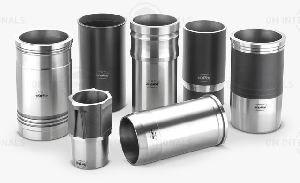
Cylinder Liners
Centrifugally Cast cylinder liner liners & sleeves with precise machining. Manufactured with isFG220/ASTM material specification with chromium & nickel elements Micro structure & chemical composition analysis of each and every batch. Fine Plateau Honed cylinder liner bore. Cylindrical Grinning to archive geometrical parameters. Randomly inspection of honing angle and structure of cylinder liners. Randomly tensile strength and profiles. 100% Dimensional inspection of finished cylinder liners. 30000 pieces Production Capacity of cylinder liners per month. We produce more than 1200 various models of cylinder liners for truck, Tractors and Cars worldwide.
...more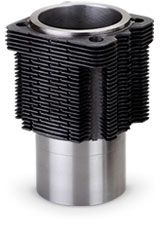
Air Cooled Block
Air Cooled Cylinder Liner Water Cooled Cylinder Liner Finned Cylinder Liner Production Capacity 50000 pieces per month Product Range Cast Iron Cylinder Liner Wet Cylinder Liner Dry Cylinder Liner Photostatted Cylinder Liner Cromard Cylinder Liner Air Cooled Cylinder Liner Water Cooled Cylinder Liner Finned Cylinder Liner Finishes Semi-finished & Fully-finished
...moreBe first to Rate
Rate ThisOpening Hours